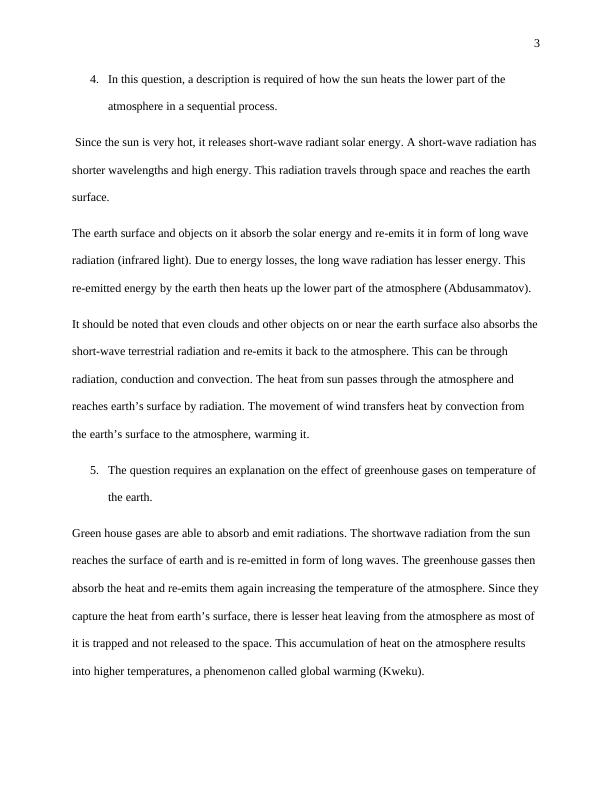Astronomy of Solar System - Geography
Answering questions related to the layers of the Earth, movement of tectonic plates, sources of Earth's atmosphere, Sun's heating process, greenhouse gases, features of the Moon visible through a telescope, formation of maria and mountains on the Moon, and the formation of Earth's Moon.
6 Pages1259 Words40 Views
Added on 2022-08-21
Astronomy of Solar System - Geography
Answering questions related to the layers of the Earth, movement of tectonic plates, sources of Earth's atmosphere, Sun's heating process, greenhouse gases, features of the Moon visible through a telescope, formation of maria and mountains on the Moon, and the formation of Earth's Moon.
Added on 2022-08-21
ShareRelated Documents
End of preview
Want to access all the pages? Upload your documents or become a member.
Greenhouse gages interact with atmosphere
|4
|460
|89
GEOL110 : GEOLOGY AND ENVIRONMENT
|8
|1540
|124
Assignment on Astronomy, NASA
|5
|616
|37
Greenhouse Gases IR active molecules
|6
|1583
|460
Geography: Understanding Sustainability, Global Warming, Climate Change, Pollution, and Environmental Agreements
|5
|1502
|353
Introduction to Geoscience Assignment 2022
|13
|2998
|20



